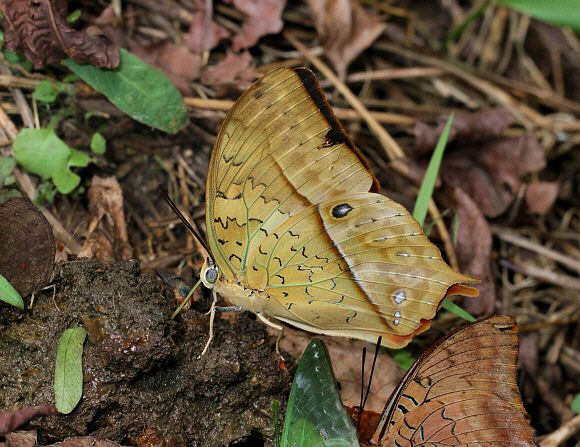
Introduction
The Charaxinae are a group of robust, medium to large Nymphalids characterised by having a rapid and powerful flight, stout bodies, falcate apexes, and a habit of feeding at dung and carrion. They are represented in the neotropics by genera including Consul, Memphis, Prepona and Agrias; in the Oriental and Australian regions by Polyura and Charaxes, and in Africa by Charaxes, Euxanthe and Palla.
There are 179 Charaxes species in the Afrotropical region, one of which – jasius, extends its range as far north as the Mediterranean coast of Europe. Most are forest-dwellers but several are adapted to savannah and arid Acacia thorn scrub habitats.
Most Charaxes species are black on the upperside, with bands of either white, orange or blue. The bands in some species are very broad, while in others they are narrow and broken into a series of small spots. Many Charaxes species have a pair of thin tails at the tornus of the hindwings.
The upper surface of the wings of fulvescens are a shimmering orange colour, darkening to deep brown at the wing edges. The basal area of the wings is yellowish-white.
Charaxes fulvescens is found throughout tropical Africa from Senegal to Zambia. The illustrated subspecies senegala flies from Senegal to Nigeria.
Habitats
This species inhabits primary and degraded rainforest at altitudes from sea level to about 800m.
Lifecycle
The larval foodplant is Allophylus ( Sapindaceae ).
Adult behaviour
Males aggregate with other Charaxes species at mammalian dung, from which they obtain vital salts which are passed to the females during copulation. Both sexes fly to forested or open hilltops where courtship and copulation take place, after which they return to the valleys and plains.
At night, or in overcast or rainy weather the butterflies roost under tree branches.
